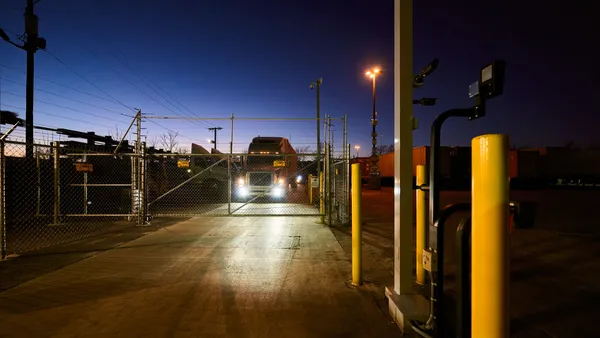Dive Brief:
- Tyson is rolling out a computer-vision-enabled inventory tracking system at facilities where it packs chicken into trays for grocery stores, The Wall Street Journal was first to report.
- The system can read SKU information and weight, replacing what Tyson described as communication by hand gestures followed by manual inventory entry. By the end of the year, Tyson's automated inventory tracking technology will combine computer vision, machine-learning and edge computing to expand its speed and processing capability.
- Automated inventory tracking using computer vision led to a double-digit increase in inventory accuracy in the three facilities currently using the technology. The company will eventually expand the program to all seven similar facilities.
Dive Insight:
Though cold, wet storage environments make implementing new technologies more research-intensive, the payoff of real-time accurate inventory information is already evident for Tyson, a spokesperson told Supply Chain Dive. The company opened the Tyson Manufacturing Automation Center near its headquarters in Springdale, Arkansas, in August, where Tyson works with manufacturers and suppliers to develop new technologies and trains employees to use it. The company has spent $215 million on new technologies in the last five years.
Precise, real-time inventory visibility can increase the frequency with which Tyson fulfills grocery customer orders on time and in full in the best of times. But inventory management is particularly key in times of uncertainty, and Tyson is dealing with plenty. In November 2019, executives said the disruptive forces of shifting global trade policy, a fire at an important Tyson facility and African swine fever (ASF), which distorted usual supply and demand across protein categories, made a relevant forecast next to impossible.
The company reported Feb. 6 that oversupply in U.S. production would likely be met with international demand since pork shortages in China due to ASF have shaken up global meat markets and usual demand cycles. But in the few days since, the scale of the coronavirus outbreak and expectations for economic impact have grown.
Major meat companies are leaning toward passive monitoring technologies and automation, whether through production or processing. Cargill invested in Irish startup Cainthus to use computer vision to track animal health in dairy operations.
But a more consumer-directed application inspired Tyson's work. Similar technology enables Amazon's cashier-less stores, which led executives to explore applying it in poultry plants, according to The Wall Street Journal.













